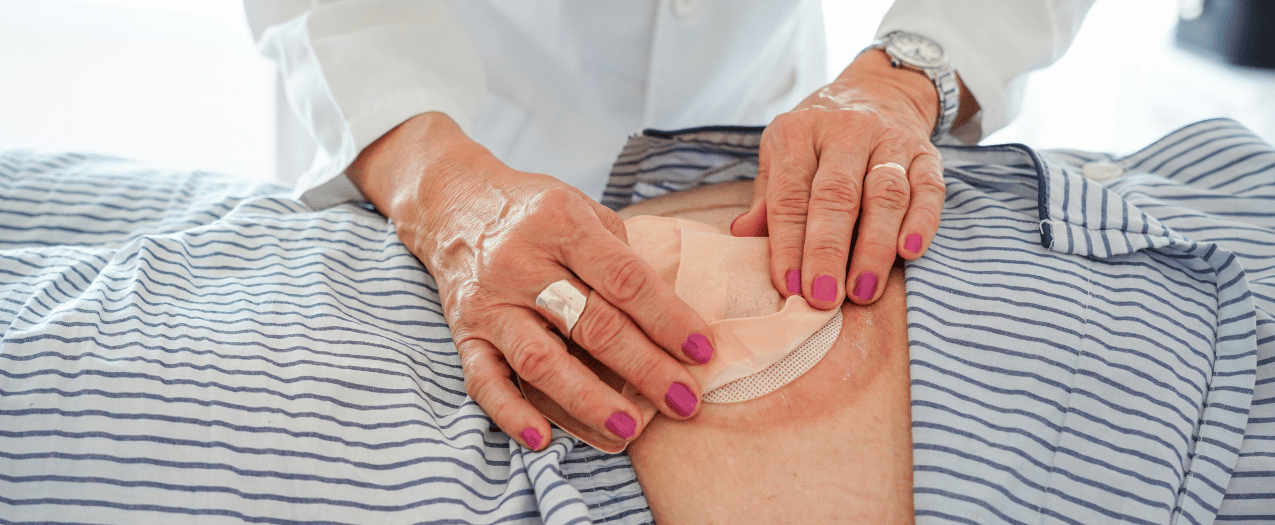
While bladder cancer is the 10th leading cause of cancer death in the United States, incident rates have decreased by about 1% per year in both men and women. This is likely due to the decrease in smoking, and it offers some positive news. But there are still important things to understand. Early detection and treatment are the best ways to improve your prognosis, but what does that mean? Treatment is different for everyone, but some may need to get a urostomy, a life-changing surgery that alters how your body passes urine. Here, we'll talk more about bladder cancer and what a urostomy is.
What is Bladder Cancer?
Bladder cancer is a type of cancer that originates within the cells of the bladder. There are several different types of bladder cancer, which differ based on where the cancer starts and its aggressiveness. The most common type is urothelial carcinoma, also called transitional cell carcinoma. This begins in the urothelial cells (the bladder wall lining) and can spread over time. Urothelial cells are also present in other areas of the urinary tract, meaning bladder cancer symptoms (i.e., tumors) may also appear there.
Although the most common type of bladder cancer is urothelial carcinoma, other forms do exist. Some of these include:
- Squamous cell carcinoma develops from thin, flat cells in the bladder lining and is typically linked to chronic irritation or inflammation. It accounts for 3% to 5% of bladder cancers.
- Adenocarcinoma originates in the glandular cells that may form in the bladder lining, and it tends to be more aggressive and less responsive to typical bladder cancer treatments. It accounts for 1% to 2% of bladder cancers.
- Small cell carcinoma is a rare (less than 1%) but fast-growing form of cancer that starts in neuroendocrine cells and often requires a combination of chemotherapy and radiation.
- Sarcoma of the bladder is extremely rare and arises from the muscle or connective tissue inside the bladder, often requiring extensive surgical treatment.
Risk Factors for Bladder Cancer
Although the exact cause of bladder cancer is often unknown, several risk factors can contribute to its onset. Some of the most common include:
- Smoking: The biggest known risk factor.
- Occupational Exposure: Chemicals used in the textile, rubber, or dye industries.
- Chronic Bladder Inflammation: Sometimes due to infections or long-term catheter use.
- Age and Gender: Most common in older adults and more frequent in men.
- Family History: Especially if a close relative has had bladder cancer.
Signs and Symptoms of Bladder Cancer
Unfortunately, the signs and symptoms of bladder cancer can mimic many other urologic conditions, making it challenging for individuals to notice. The most common symptoms of early-stage bladder cancer can include things like:
- Hematuria (blood in the urine): Urine may appear pink, red, or brown. It’s often painless and intermittent.
- Frequent Urination: Needing to urinate more often than usual.
- Urgency – feeling a strong, sudden need to urinate, even when the bladder isn’t full.
- Dysuria: Discomfort or stinging when urinating.
- Difficulty urinating: Weak stream or trouble emptying the bladder fully.
- Pelvic Pain: Aching or pressure in the lower abdomen.
- Lower Back Pain: Especially on one side, potentially indicating spread to nearby structures.
- Unexplained Weight Loss: May occur in more advanced stages.
- Fatigue: Feeling unusually tired or weak.
If you notice one or more of these symptoms, it's best to see your doctor. This ensures that the proper diagnosis and treatment are administered to address the symptoms and, hopefully, rule out a cancer diagnosis. If you are diagnosed with carcinoma of the bladder, your doctor will work with you to determine the best treatment plan for your situation.
Can Bladder Cancer Lead to a Urostomy?
A urostomy becomes necessary when the bladder is removed during a radical cystectomy, and the body requires a new way to store and eliminate urine. While not everyone with bladder cancer will need a urostomy, it's often the safest and most reliable option for those with advanced or high-risk forms. The decision to perform a urostomy depends on a few factors, which will be discussed with your doctor.
What Is a Urostomy?
A urostomy is a surgical procedure that creates a new path for urine to leave the body after removing the bladder. Surgeons typically use a short segment of the small intestine, called the ileum, to form a conduit. The ureters, which normally carry urine from the kidneys to the bladder, are connected to one end of this segment. The other end is brought through an opening in the abdominal wall to form a stoma.
The stoma is typically located on the lower right side of the abdomen. It's pink, moist, and cannot be voluntarily controlled. As a result, urine drains continuously into an external pouching system that must be worn at all times.
Though this might sound daunting, most people find that, with time, managing a urostomy becomes second nature. Still, the adjustment period can be challenging, so having the right support is essential.
Adjusting to Life with a Urostomy
Living with a urostomy is a major adjustment, but it’s one that many people adapt to with grace, resilience, and support. The most challenging periods are the immediate days and weeks after surgery, as there's a bit of a learning curve you'll need to overcome. This revolves around emptying and changing your pouch, along with learning to care for the peristomal skin. Of course, these physical adjustments are on top of the emotional responses many new ostomates have to the changes.
It's normal to feel a bit uncertain or self-conscious, and how you process the change is, of course, up to you. Many new ostomates find that joining a support group is extremely helpful, and there are plenty of options for you to find one online or in person. With some added support from an ostomy nurse and time to adjust, ostomates return to their usual routines, even if they do so a bit differently.
Understanding Urostomy Supplies
The most important tool for managing your urostomy is the pouching system. They come in either one-piece or two-piece designs, with plenty of different brands to choose from. In a one-piece system, the pouch and adhesive skin barrier are joined together. In a two-piece system, they are separate and can be changed independently, offering flexibility that many find convenient.
There are also a few other ostomy supplies to be familiar with. Accessories like barrier rings or stoma paste can help prevent leaks by improving the seal around the stoma. Adhesive removers and skin prep wipes make changing the appliance gentler on the skin. Some ostomates also use stoma powder to manage skin irritation or moisture, especially in the early weeks of healing. At night, a larger drainage bag may be attached to allow for uninterrupted sleep. Be patient, as it may take trial and error to find the best products for your lifestyle, stoma, and skin.
How to Find the Right Urostomy Supplies
While a bladder cancer diagnosis can feel like the beginning of a long and difficult road, it can also be the start of a new chapter. For those who undergo urostomy surgery, the process of learning and adjusting can be transformative. And remember, a urostomy doesn’t define who you are. It’s simply one part of your story. To help you get the most out of your ostomy care, partner with Byram Healthcare today. We carry a wide selection of high-quality ostomy products to help simplify life with a urostomy. We also offer discreet delivery directly to your doorstep to ensure that you always have the products you need on hand.




